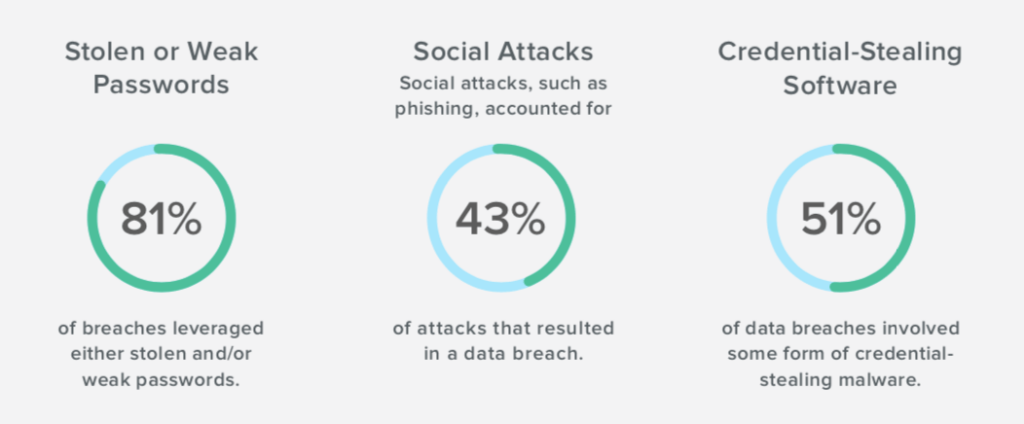Definition of password attacks

A password attack is an unauthorised attempt to access a user’s account or system by exploiting weak or vulnerable passwords. These attacks can be carried out using various techniques and tools.
Explanation of how password attacks occur:
Password attacks typically involve systematically testing different passwords until the correct one is discovered. Attackers use a combination of software tools and strategies to exploit vulnerabilities in password security systems.
Importance of understanding different types of password attacks:
By understanding different types of password attacks, individuals and organisations can better protect themselves against potential breaches. Knowing the techniques employed by attackers can help in implementing appropriate security measures.
Examples of password attacks in real-world scenarios:
There have been numerous cases of password attacks in various industries, including data breaches at multinational corporations, government agencies, and online platforms. These attacks have led to significant financial loss and reputation damage.
Overview of the impact of successful password attacks:
A successful password attack can result in authorised access to sensitive information, financial loss, and compromised systems. It can also lead to the official use of user accounts for malicious purposes.
The Importance of Protecting Against Password Attacks
Protecting against password attacks is crucial to safeguard sensitive information and prevent authorised access. A successful password attack can have severe consequences, resulting in financial and reputational damages for individuals and organisations.
When a password is compromised, an attacker gains access to personal and confidential data, which can be used for identity theft, financial fraud, or authorised access to critical systems. This can lead to significant financial losses and damage to an individual or company’s reputation.
Implementing strong password policies is essential in mitigating the risk of password attacks. This includes enforcing complex and unique passwords, regularly updating passwords, and implementing techniques such as two-factor authentication and password management.
Educating users about password security is another vital aspect of protecting against password attacks. By raising awareness about the importance of strong passwords and the potential consequences of weak passwords, individuals can become more proactive in ensuring their passwords are secure.
By taking these measures to protect against password attacks, individuals and organisations can significantly reduce the risk of falling victim to cybercriminals and maintain the security and integrity of their sensitive data.
Different Types of Password Attacks
When it comes to password attacks, attackers use several methods to gain authorised access to user accounts. Awareness of these different types of attacks can help you better understand the potential threats and take necessary precautions to protect your passwords.
Brute Force Attacks
A brute force attack involves systematically attempting all possible combinations of characters until the correct password is discovered. This method can be time-consuming but can eventually crack weak passwords.
Dictionary Attacks
In a dictionary attack, the attacker utilises a pre-existing list of commonly used words and phrases to guess the password. This type of attack targets users who have chosen easily guessable passwords.
Rainbow Table Attacks
A rainbow table attack involves using precomputed tables containing encrypted passwords and their corresponding plaintext versions. These tables can significantly expedite the process of cracking passwords.
Social Engineering Attacks
Social engineering attacks use deceptive techniques to manipulate individuals into revealing their passwords. This can include tactics like impersonation, phishing, or pretexting to trick users into divulging their login credentials.
Phishing Attacks
In a phishing attack, the attacker sets up a fraudulent website or sends misleading emails that appear to be from a legitimate source. The goal is to deceive individuals into entering their login credentials on the attacker’s site, thereby compromising their passwords.
Standard Methods Used in Password Attacks
Password attackers use various methods and techniques to gain authorised access to accounts. It’s essential to be aware of these standard methods to protect your passwords better:
Password Cracking Software Tools
Password cracking software tools are programs designed to guess passwords by systematically trying different combinations of characters and patterns. These tools exploit vulnerabilities in password encryption algorithms to speed up the cracking process.
Password Spraying Techniques
Password spraying involves using a few commonly used passwords and trying them against multiple user accounts. This method takes advantage of users who reuse passwords across different versions, increasing the chances of a successful password attack.
Keylogging Methods
Keyloggers are malicious software or hardware devices that record every keystroke a user enters. By capturing login credentials as they are typed, attackers can access passwords and other sensitive information.
Credential Stuffing Attacks
Credential stuffing attacks involve using stolen username and password combinations from one website to gain authorised access to other accounts. Attackers use automated tools to test these stolen credentials against multiple websites.
Password Sniffing Techniques
Password sniffing refers to the interception and capturing passwords or authentication data as it travels over a network. Attackers use network sniffers to eavesdrop on traffic and extract passwords in plaintext or encrypted form.
Understanding these standard methods used in password attacks is crucial to implement measures that can effectively mitigate these risks.
Best Practices for Protecting Your Passwords
Regarding password security, following best practices can significantly reduce the risk of falling victim to password attacks. Here are some recommended steps:
1. Use complex and unique passwords
Create passwords at least 12 characters long and include a mix of uppercase, lowercase, numbers, and special characters. Avoid using easily guessable information such as birthdays or names.
2. Utilize password encryption techniques
Encrypting passwords ensures that they cannot be easily deciphered even if they are compromised. Always choose applications and systems that employ robust encryption algorithms for storing passwords.
3. Implement two-factor authentication
Add an extra layer of security by implementing two-factor authentication. This requires users to provide two verification forms: a password and a unique code sent to their mobile device.
4. Use a Password Manager
Password managers are tools that securely store and generate unique passwords for different accounts. They can help you create strong passwords and remember them without writing them down or reusing them.
How to Prevent Password Attacks
Preventing password attacks is essential to protect your sensitive information. Here are some best practices to follow:
1. Strong Password Policies
Implementing strong password policies is crucial. Users must create complex passwords that combine uppercase and lowercase letters, numbers, and special characters. Encourage frequent password changes to minimise the risk of compromise.
2. Implement Account Lockouts
Set up account lockout policies where user accounts are automatically locked after a certain number of failed login attempts. This helps protect against brute force attacks by preventing repeated login attempts using different passwords.
3. Monitor and Log Activities
Regularly monitor and log activities on your systems. This lets you promptly detect any suspicious login attempts or authorised access attempts. Analysing the logs can provide valuable insight into potential password attacks and aid in mitigating the risks.
4. Patch and Update Systems
Ensure that your systems and software are regularly patched and updated. Keeping your systems up to date helps protect against known vulnerabilities that attackers can exploit to gain authorised access to your passwords.
5. Employee Training
Train your employees on password security best practices. Educate them about the risks of weak passwords, social engineering techniques, and how to identify and report phishing attempts. Regularly remind employees of the importance of password security and encourage them to adopt good password hygiene.
Following these preventive measures can significantly reduce the risk of password attacks and better protect your sensitive information.
Conclusion
In conclusion, password attacks pose a significant threat to individuals and organisations alike. Understanding the different types of password attacks and their potential impact is crucial for implementing effective security measures. Protecting against password attacks is essential to avoid financial and reputational damages. Strong password policies, regular password updates, and educating users about password security are vital practices to safeguard against attacks. Implementing account lockouts, monitoring and logging practices, and regularly patching systems can also help prevent password attacks. It is essential to prioritise password security and provide ongoing training to employees to maintain a strong defence against password attacks.




